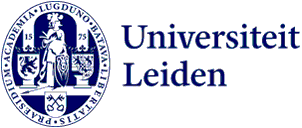127 search results for “gravitational lezing” in the Public website
-
Gravitation, strings, and strongly interactive matter
What is the connection between materials with weak and strong gravitational interactions?
-
Gravitational waves through the cosmic web
The first direct detection of gravitational waves opened the possibility of mapping the Universe via this new and independent messenger.
-
Cosmic tomography with weak gravitational lensing
We explored the Universe using weak gravitational lensing, a phenomenon that occurs when light from distant galaxies is bent by the gravitational fields of closer cosmic objects, much like how a lens distorts light.
-
Weighing the Dark: Cosmological Applications of Gravitational Lensing
Promotor: K. Kuijken, Co-Promotor: H. Hoekstra
-
The gravitational billion body problem
Promotor: Prof.dr. S. Portegies Zwart
-
Studying dark matter using weak gravitational lensing : from galaxies to the cosmic web
Of all the mass in our Universe, 80% is thought to consist of a hypothetical and invisible substance called dark matter (DM).
-
Light Weighed: On the Statistics and Systematics of Weak Gravitational Lensing
In astronomy, the interpration of observations and measurements plays a crucial role: we rely purely and fundamentally on the information that reaches us as observers. And 80% of all matter in the universe is undetectable directly.
-
Into the Darkness: Forging a Stable Path Through the Gravitational Landscape
In this thesis we study the landscape of gravitational models which modify GR by introducing an additional scalar degree of freedom (d.o.f.) to source Cosmic Acceleration.
-
Exploring the Edge
At the largest scales, two ingredients dictate the distribution of matter in the Universe. The first is dark matter, acting as an invisible scaffolding held together by gravitational forces.
-
Gravitational Lenses measure Universe Expansion
It's one of the big cosmology debates: the universe is expanding, but how fast exactly? Two available measurements yield different results. Leiden physicist David Harvey adapted an independent third measurement method, using the light warping properties of galaxies predicted by Einstein. He published…
-
Gravitation grants for three major research programmes
Three major research projects involving Leiden scientists have been awarded a grant from NWO’s Gravitation Programme. The projects are on innovation processes, organs-on-chips and quantum software.
-
Leiden University involved in five Gravitation projects
Leiden University is involved in five new NWO Gravitation projects. Two relate to mental disorder and the remaining three to a healthy lifestyle, the combination of human and artificial intelligence, and the special relationship between plants and microbes.
-
2 november: Lezing Lamberto Zannier over Europese veiligheid
Lamberto Zannier, Secretary General of the Organization for Security and Co-operation in Europe (OSCE), gave a lecture on ‘The OSCE, a bridge between East and West and a platform for dialogue on European security’
-
The alignment of galaxies across all scales
Galaxy intrinsic alignments induce a major astrophysical contamination to weak gravitational lensing measurements and need to be modelled and mitigated when extracting cosmological information from such measurements.
-
Gravitation funding for five projects with Leiden researchers
The Advanced Nano-electrochemistry Institute Of the Netherlands (ANION) consortium will receive 23.6m euros in Gravitation funding for research on important electrochemical processes for energy transition. An additional four consortia with members from Leiden have also been awarded funding.
-
Playing dice with the Universe
The ultimate goal of cosmologists is to find a cosmological model able to explain the current observational data.
-
Exploring future multi-messenger Galactic astronomy
For centuries astronomers studied the Universe by collecting light. Nowadays, we are living in times of great technological advancements, which allow us to explore our Universe in a new way - though gravitational wave radiation.
-
The connection between mass and light in galaxy clusters
Promotor: Koen Kuijken Co-promotor: Henk Hoekstra
-
NWO Gravitation Programme awarded 10-year grant to research consortia 'Networks'
Professor Frank den Hollander has been awarded a 10-year grant through the NWO Gravitation program, jointly with colleagues from the University of Amsterdam, the Center for Mathematics and Computer Science in Amsterdam, and the Technical University of Eindhoven.
-
Galaxy alignments from multiple angles
Galaxies form and live inside dark matter haloes. As a consequence, they are exposed to the tidal fields generated by the surrounding matter distribution: this imprints a preferential direction to the galaxy shapes, which leads to a coherent alignment on physically close galaxies, called intrinsic a…
-
The galaxy–dark matter connection: a KiDS study
In this thesis, the research focuses on the properties of dark matter and dark matter haloes and how they connect with the galaxies we can observe in the Universe.
-
Aggravating matters: accounting for baryons in cosmological analyses
Three major cosmology-focused missions are planned for the next decade: the Euclid space telescope, the Vera C. Rubin Observatory in Chile, and the Nancy Grace Roman Space Telescope.
-
 Simon Portegies Zwart
Simon Portegies ZwartScience
-
Probing the darkness: the link between baryons and dark matter
Promotor: Prof.dr. J. Schaye, Co-promotor: Marcello Cacciato
-
Some Assembly Required: The Structural Evolution and Mass Assembly of Galaxies at z
This thesis investigates the structural evolution and assembly of galaxies since the first few billions years after the big bang.
-
Weighing heavenly bodies based on bending light
Many astronomers suspect that most of the matter in the universe is invisible. So how can you weigh dark matter if you can't actually see it? Professor Henk Hoekstra is looking for a solution. Inaugural lecture 25 June.
- Huizinga Lecture
-
Unveiling dark structures with accurate weak lensing
Improvements of weak gravitational lensing shape measurements are presented and some used for data analysis.
-
Subodh Patil Group - Particle Cosmology
Our research primarily focuses on the early universe and its origins in theories that go beyond the Standard Model of particle physics.
-
Supermassive Black Holes
Lecture, Studium Generale
-
Applications of AdS/CFT to strongly correlated matter: from numerics to experiments
What physics controls the properties of quantum matter, such as how electrons flow inside high-temperature superconductors? This question has captivated the physics community and industry for decades, in part due to the great technological potential such materials have, but also because they have resisted…
-
Enlightening the Primordial Dark Ages
This thesis is dedicated to the exploration of the primordial dark ages: unknown physics during the earliest stages of the Universe’s expansion that have not yet been directly probed by observations. Cosmic inflation is a burst of exponential expansion of space after the “Big Bang”.
-
Testing gravity on the largest scales with kids and friends
What are the 'dark' components of the universe?
-
Alessandra Silvestri Group - The Late Universe
We are cosmologists, in other words we use physics to study the Universe, how it started and evolved into the structure that we observe around us.
- Probability, Operations, and Dynamics
-
Leiden Institute of Physics
Research at the Leiden Institute of Physics (LION) is foundational and curiosity driven. All our scientists share a desire to increase the knowledge of the world around us, in an open atmosphere of inquiry from which innovative ideas emerge that provide applications and value for society.
-
Marie Curie grant for dark matter
Leiden Observatory is going to use a new technique to carry out calculations on gravitational lensing measurements. They will do this is the context of research into the formation of elliptical galaxies. Alessandro Sonnenfeld (University of Tokyo) who developed this technique joined the research team…
-
Algorithms for quantum software
Top scientists of three Dutch universities are working on software and systems for quantum computers. Researchers of the Leiden Institute of Advanced Computer Science (LIACS) and the Leiden Institute of Physics (LION) are developing new algorithms to make those super computers work. The coming years,…
-
Research Projects, Categories and Supervisors
These are the proposed research projects for LEAPS 2019. Please note that not all projects will go ahead and some may still be added in the near future. Final funding decisions lie with the Faculty sponsors. And please make a note that if you are interested in an ESA project, to check if your state…
-
Giant galactic outflows and shocks in the Cosmic Web
The radio sky harbours both galactic and extragalactic sources of arcminute- to degree-scale emission of various physical origins. To discover extragalactic diffuse emission in the Cosmic Web beyond galaxy clusters, one must image low–surface brightness structures amidst a sea of brighter compact fore-…
-
Delta-Institute for Theoretical Physics
Zaanen
-
Aspects of cosmic acceleration
The focus of the dissertation
-
From supernovae to galaxy clusters: observing the chemical enrichment in the hot intra-cluster medium
Promotor: Jelle S. Kaastra Co-promotor: Jelle de Plaa
-
Institute for Chemical Immunology
Overkleeft
-
The French-Anglophone divide in lithic research
In this provocative study, Shumon T. Hussain engages with the long-standing issue of French-Anglophone research conflicts in Palaeolithic archaeology.
-
Frontiers of Nanoscience (NanoFront)
Can we make quantum devices from quantum surprises? And can we explore and build life from the nanoscale up?
-
Hensen Lab - Quantum Magnetomechanics
Welcome to the Hensen Lab! We are a young dynamic experimental research group starting at the Leiden Institute of Physics. Our lab addresses one of the key challenges of modern physics: understanding the interface between quantum mechanics and general relativity.
-
Hunting for the fastest stars in the Milky Way
The high velocity tail of the total velocity distribution of stars provides essential insight into fundamental properties of the Galaxy.
-
Alexey Boiarskyi Group - Particle and Astroparticle Physics
My work is motivated by the necessity to extend Standard Model of Particle Physics in order to explain three observed phenomena that this great theory fails to accommodate
-
Discover More HyperVelocity Stars to shed light on the Galaxy
Rossi
